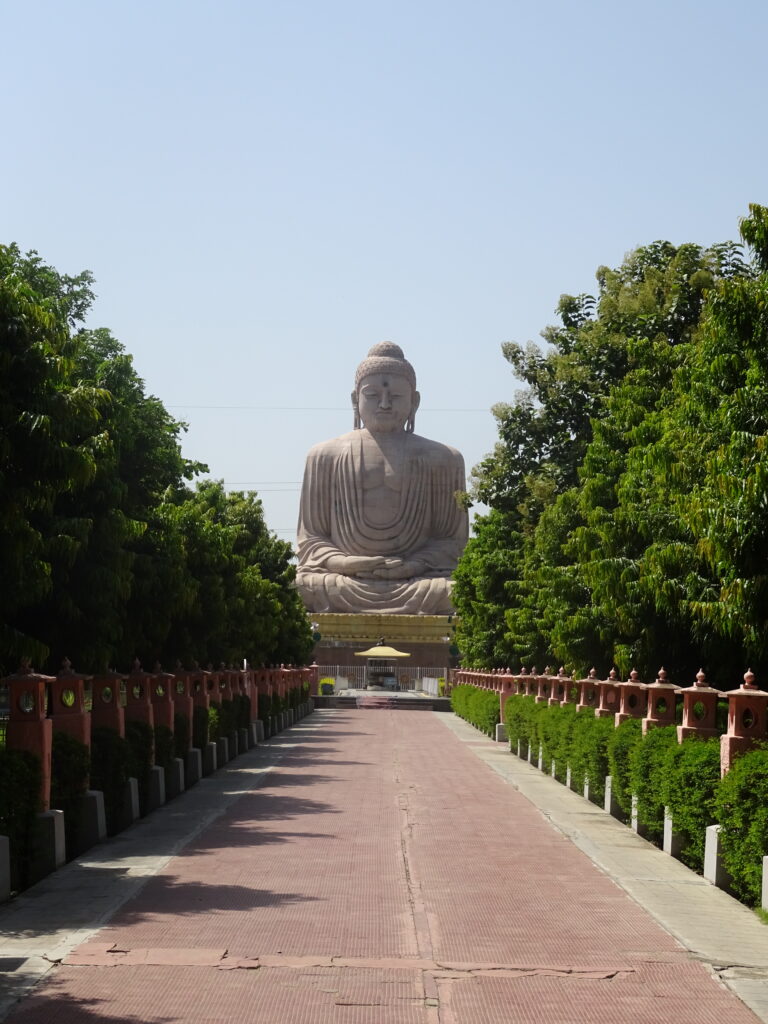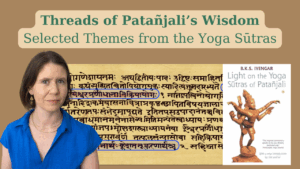
Dhyana (ध्यान), representing the seventh limb of Patanjali’s eightfold path, embodies a state of profound meditation where the practitioner experiences complete absorption in the object of contemplation. This deep meditative state transcends ordinary concentration, emerging as the natural evolution from Dharana (focused concentration) into a more fluid and sustained state of awareness. In this sacred space of practice, the mind becomes quiet and expansive, allowing for a profound spiritual experience where the boundaries between observer and observed begin to dissolve.
Unlike its predecessor Dharana, where effort is required to maintain focus on a single point, Dhyana flows naturally like a river of consciousness. The transition can be understood through the metaphor of water – where Dharana might be compared to separate droplets of focused attention, Dhyana resembles a continuous stream, flowing uninterrupted toward the object of meditation. This shift from discrete moments of concentration to a sustained flow marks the essential characteristic of Dhyana practice.
The depth of Dhyana creates a unique relationship with time. In this meditative state, our ordinary perception of time seems to pause or dissolve, opening up a spacious awareness where past and future lose their grip on consciousness. The present moment expands, creating a profound sense of immediacy and presence that characterizes genuine meditative absorption. This timeless quality of Dhyana allows practitioners to experience reality with remarkable clarity and depth.
The transformative power of Dhyana lies in its ability to quiet the usually active mind, allowing distracting thoughts and mental fluctuations to naturally subside. Rather than forcing the mind into silence, Dhyana represents a state where stillness emerges organically through sustained practice. This natural unfolding is crucial to understand – Dhyana cannot be forced or manufactured but rather arises spontaneously when the conditions are right, much like a flower blooming in its own time.
In the context of daily life, Dhyana offers more than just a meditative technique; it presents a pathway to fuller, more conscious living. As practitioners develop their capacity for sustained meditation, they often find this depth of awareness beginning to permeate their everyday experiences. Simple activities take on new significance when approached with the quality of attention cultivated in Dhyana practice. The boundary between formal meditation and daily life starts to blur, allowing for moments of profound presence throughout the day.
The practice of Dhyana also serves as a powerful tool for managing stress and enhancing mental clarity. In our modern world, where constant stimulation and digital distractions fragment our attention, the ability to enter states of deep meditation becomes increasingly valuable. Through regular practice, we develop the capacity to access inner stillness even amidst external chaos, finding refuge in the quiet depths of our own consciousness.
One of the most remarkable aspects of Dhyana is its ability to foster a sense of unity between the meditator and the object of meditation. This experience of oneness represents a fundamental shift in perception, where the usual sense of separation between subject and object begins to dissolve. This unity isn’t merely conceptual but represents a direct experience of interconnection that can profoundly influence how we relate to ourselves and the world around us.
The journey into Dhyana often begins with small moments of sustained attention. Practitioners might start by dedicating a few minutes each day to sitting quietly, focusing on their breath or a chosen object of meditation. As practice deepens, these moments naturally extend, and the quality of attention becomes more refined. The key lies not in the duration of practice but in the sincerity and regularity with which we approach it.
Through consistent practice, Dhyana becomes a doorway to deeper spiritual understanding. It allows us to explore the nature of consciousness itself, moving beyond the surface level of thoughts and emotions to touch the profound stillness that lies at the core of our being. This exploration isn’t merely philosophical but represents a practical path to experiencing the deeper dimensions of existence.
The effects of regular Dhyana practice extend far beyond the meditation cushion. Practitioners often report enhanced clarity of thought, improved emotional regulation, and a greater sense of inner peace in their daily lives. These benefits emerge not as direct goals of practice but as natural byproducts of developing a more refined relationship with consciousness itself.

Session 3 – Threads in Patañjali’s Wisdom For Session 4: Āsana as a Path to Samādhi We explore Patañjali’s teaching on āsana, and more

Session 2 – Threads in Patañjali’s Wisdom For Session 3: Abhyāsa and Vairāgya We explore the twin pillars that support all yogic transformation: अभ्यास
Agi Wittich is a yoga practitioner since two decades, and is a certified Iyengar Yoga teacher. Wittich studied Sanskrit and Tamil at the Hebrew University of Jerusalem, Israel, completing a PhD with a focus on Hinduism, Yoga, and Gender. She has published academic papers exploring topics such as Iyengar yoga and women, the effects of Western media on the image of yoga, and an analysis of the Thirumanthiram yoga text.